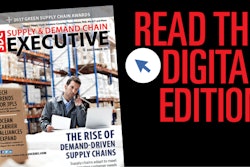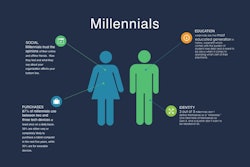
Much of what's written about supply chain design is focused, quite logically, on the first word in that phrase: supply. But that supply only exists, of course, to meet some demand.
The pure complexity of demand—based on factors such as international business markets, procurement, your company’s marketing spend and even the weather—makes it difficult to quantify demand influences and accurately predict future demand. That doesn’t mean it’s impossible.
Supply chain professionals should absolutely strive to better understand demand; after all, demand is one of the most important factors impacting your overall supply chain design. You need to make sure your business has a solid grasp on future demand to ensure sufficient capacities are in place and products are deployed appropriately.
With the new year just around the corner, now is the perfect time to take on your demand challenges. Here are four resolutions to follow that will set you on the right path to becoming fully demand-driven:
1. Investigate—Before shifting a demand-driven strategy into high gear, it’s critical to ask the right questions. Many of the questions you ask in your "investigative reporting" about demand will be oriented externally, i.e., what industry developments or regulatory trends might substantially increase or shift demand? Here are a few questions you should ask to determine how your own company can best approach its demand strategy and what the potential benefits could be:
- Do you have challenges getting internal approval of or buy-in for strategic supply chain initiatives due to lack of visibility into long-term future demand?
- Are you able to provide insights to company management about how evolving demand trends might impact your supply chain?
- Are you able to model the long-term impact of demand based on internal company strategic decisions (new product design, current product life cycles, expansion into new markets)?
- Do you have a solid understanding of and ability to quantify the factors driving changes in demand over the long term?
- Do you need more reliable long-term demand projections to support strategic decisions about changes in your network design?
The important first step of answering these questions will help you devise a customized strategy for your supply chain, outline your goals and KPIs for improvement and map to them continuously. Without this framework in place, you’re likely to veer off course in a number of different directions.
2. Train for the Big Picture—For near-term demand planning, you likely have processes in place to adjust for factors such as weather, seasonality, holidays and imminent product line changes (such as new features or end of life.) However, it's essential to look at the bigger picture to understand your customers' buying behavior and quantify the factors that will impact future demand. Without this visibility, the supply chain design that serves you well today may not be able to accommodate future market needs.
Retraining your mind to think big picture will help your company respond more effectively to demand changes, trends and fluctuations—and adjust your supply chain design accordingly before issues arise.
3. Get Scientific—Demand modeling technology has emerged as a critical capability for businesses that want a visually interactive way to have more confidence in, and a better understanding of, their predictions—predictions that can help them make better informed decisions and establish more effective supply chains.
The practice of demand modeling allows you to explore and experiment with alternative theories of what factors impact demand. The ability to try out different demand scenarios and determine appropriate designs, policies and responses enables you to prepare your organization for any potential issues that may crop up along the way (looking ahead to the big picture.) Because you’ve practiced that scenario already—and understand the drivers and the likelihood of them impacting demand—you know how to react to potential events when they occur.
4. Establish a Repeatable Process—Factors that influence demand are dynamic. Having a repeatable process for capturing change enables better supply chain design and makes it easier to re-calculate scenarios as variables change. Because it’s repeatable, you don’t have to start from scratch every time there’s an adjustment or a similar situation in the future. Instead, your process can be continuously improved as new information becomes available. Thus, the accuracy of prediction increases, as does your confidence in strategic supply chain design decisions, and you’re quicker to adjust, or quicker to get started on a new analysis.
Becoming a demand-driven supply chain does not have to be as daunting as it appears. By asking the important framework questions, thinking big picture, incorporating demand modeling, and creating a standardized, repeatable process, you will make your supply chain more robust, flexible and dynamic because you have better, more accurate information. Following these demand resolutions will ultimately allow you to be more certain of your predictions and act with the confidence that if demand changes, you’ll be ready.
What are some of your other supply chain resolutions for 2018?












